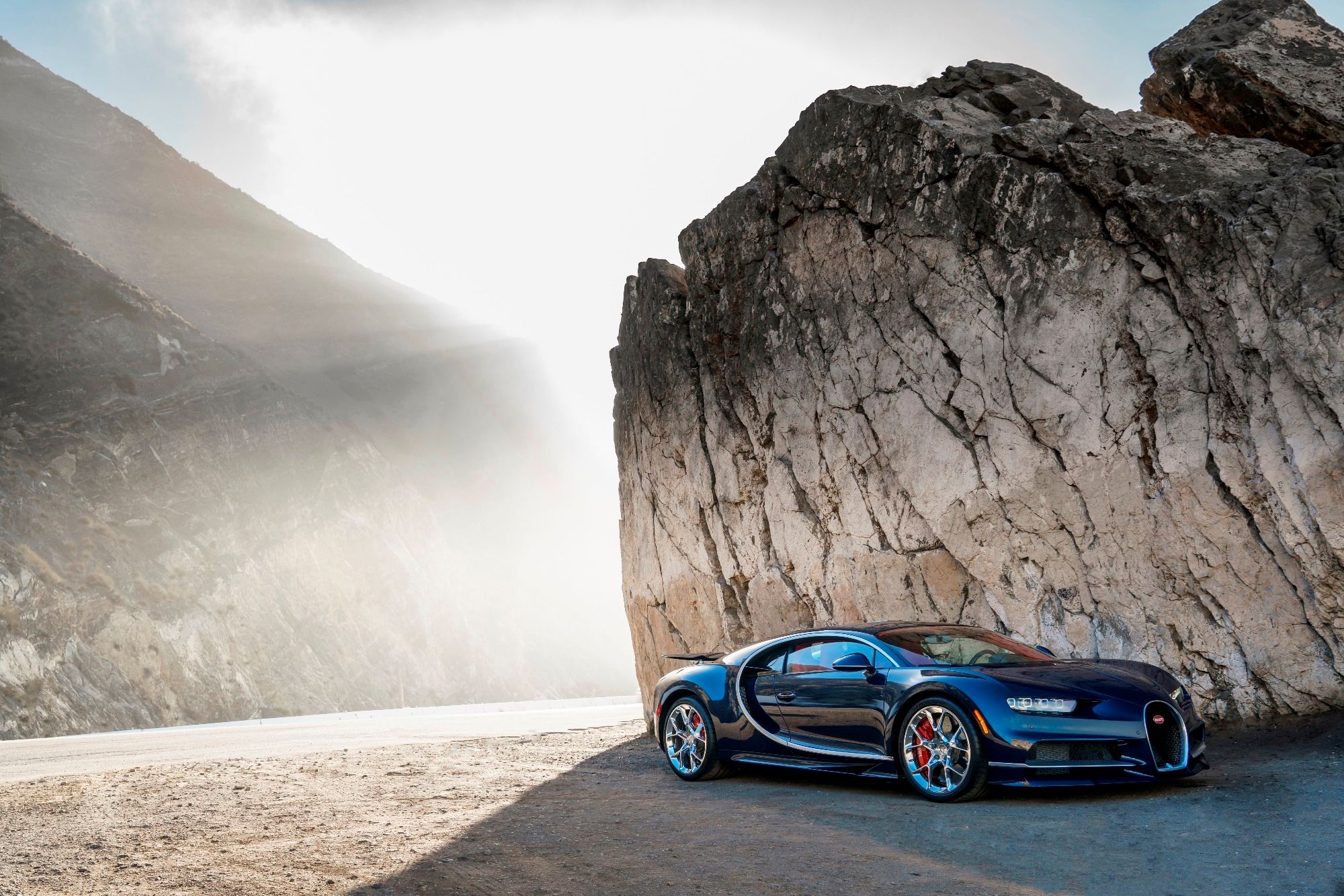
Recently, Bugatti showed off several of its most iconic cars in a livery favored by Ettore Bugatti himself: black and yellow. Of course, the brand is better known for its French Racing Blue cars, but Ettore went another way with his personal cars. As cool as the black-on-yellow Chiron was, Bugatti evidently believes that this black and yellow Bugatti deserves some press all its own.
There were only ten Bugatti Type 57 Roadster Grand Raid chassis ever built. This one, which Bugatti calls the Grand Raid Usine, was unveiled at the Salon de l'Automobile in Paris in October 1934. This one, chassis 57222, is also the only one with this dramatic Batmobile-esque aluminum body and unique paint scheme.
"The Bugatti Type 57 Roadster Grand Raid Usine is an exceptional piece of Bugatti's heritage in every aspect and one that embodies all that Bugatti stands for in the 21st century," says Christophe Piochon, President of Bugatti Automobiles. "It was engineered for performance and designed with the highest standards of craftsmanship and luxury. It is a luxury sports car, the inspiration for modern Bugatti cars."
You can see some of that inspiration throughout the car, though the front is the most obvious place. The famous U-shaped Bugatti grille still adorns the front, just as it has on every Bugatti ever built. The hemispherical concept, with twin bulkhead structures behind the seats and the line dividing the hood, is another example of what would become a modern throwback in the Chiron.
Bugatti claims it doesn't know where the Usine moniker came from. The brand says it has never used the name before. We threw it into Google and found it may mean "factory" in French, but l'Usine is a better translation of the word. Legend has it that Ettore Buggati's son, Jean, designed the car. Perhaps he named it as well? Regardless, Jean Bugatti built a racer, which differed from the brand's other models at the time, like the more famous Type 57SC Atlantic.
Bugatti says that is most evident in the way the car was designed, with streamlined, elongated fenders, a V-shaped windshield, and the twin tunnels behind the seats. Jean Bugatti also adjusted the steering column angle to push the driver further toward the middle of the car. Obviously, the handbrake, gearshift, and pedals also came with the move.
After the car's debut in Paris, it was raced in the Paris-Nice rally by Pierre Veyron, the namesake for the Bugatti Veyron. The car also placed first at a Chavigny hill climb event and was later sold to an owner in 1946, who modified the car slightly. At some point prior to 2001, those changes were reverted, and the car has lived at the Louwman Museum in The Hague since it's actually owned by the museum founder's son.
